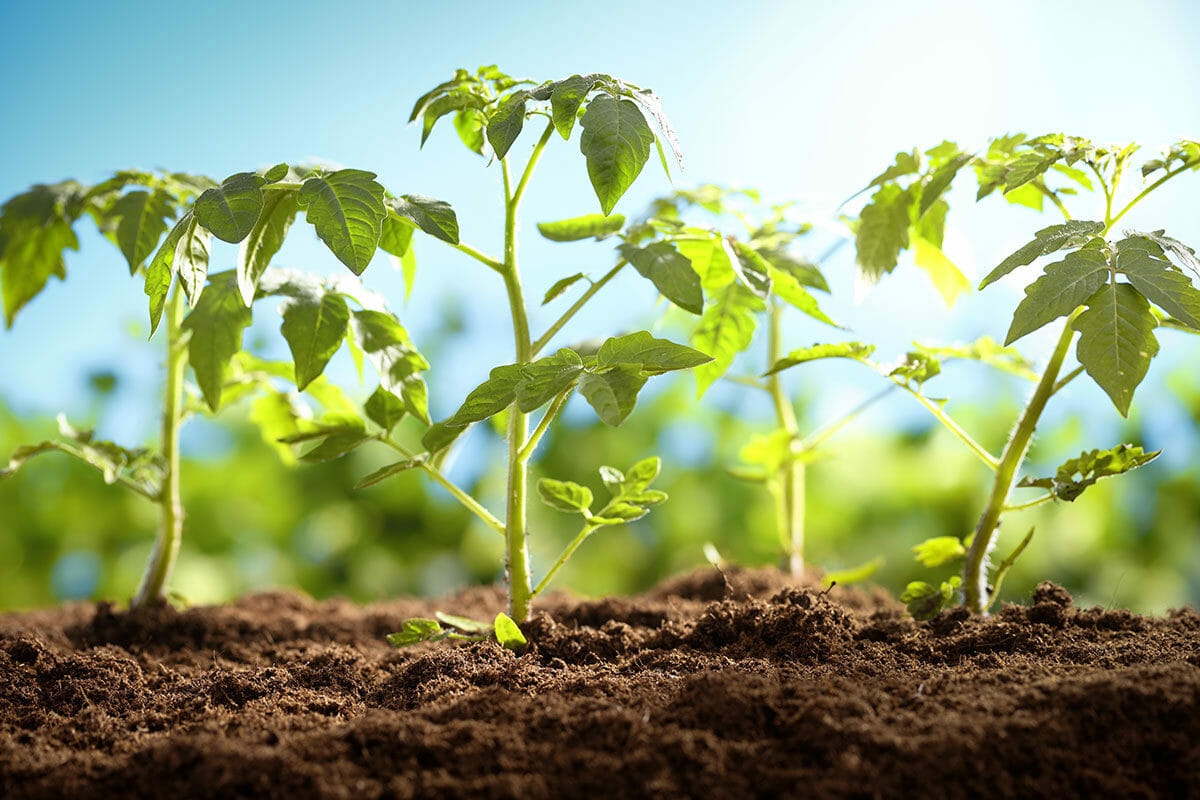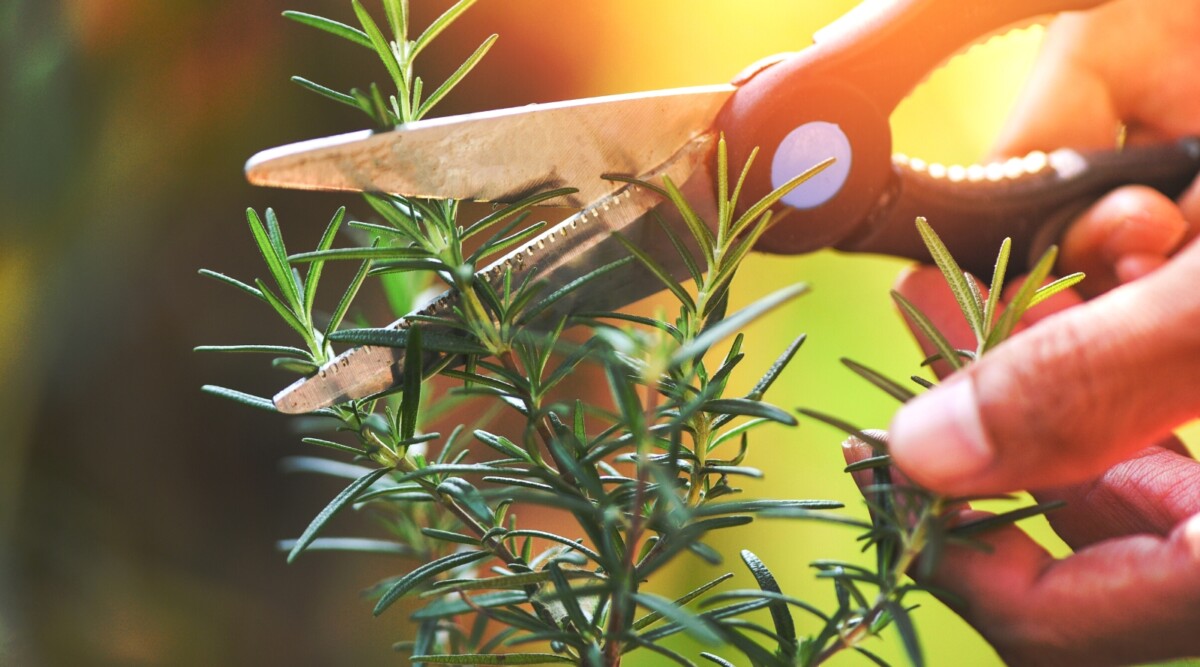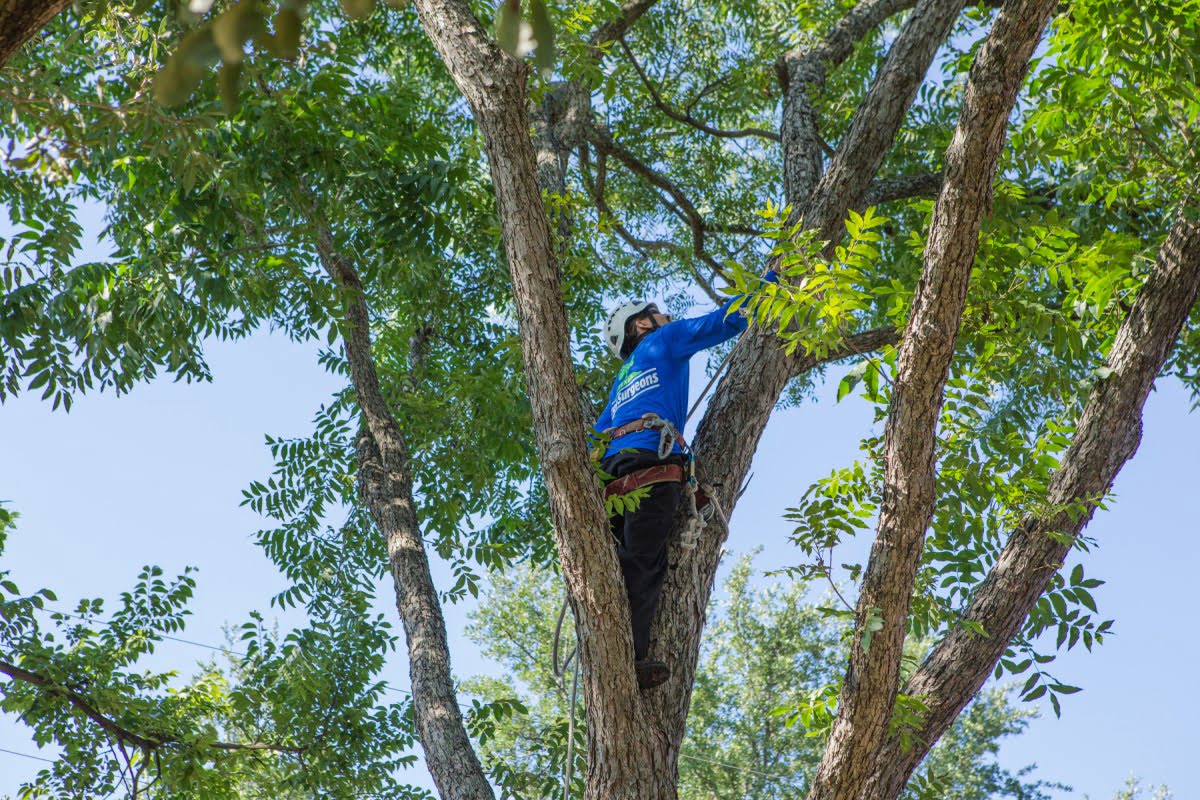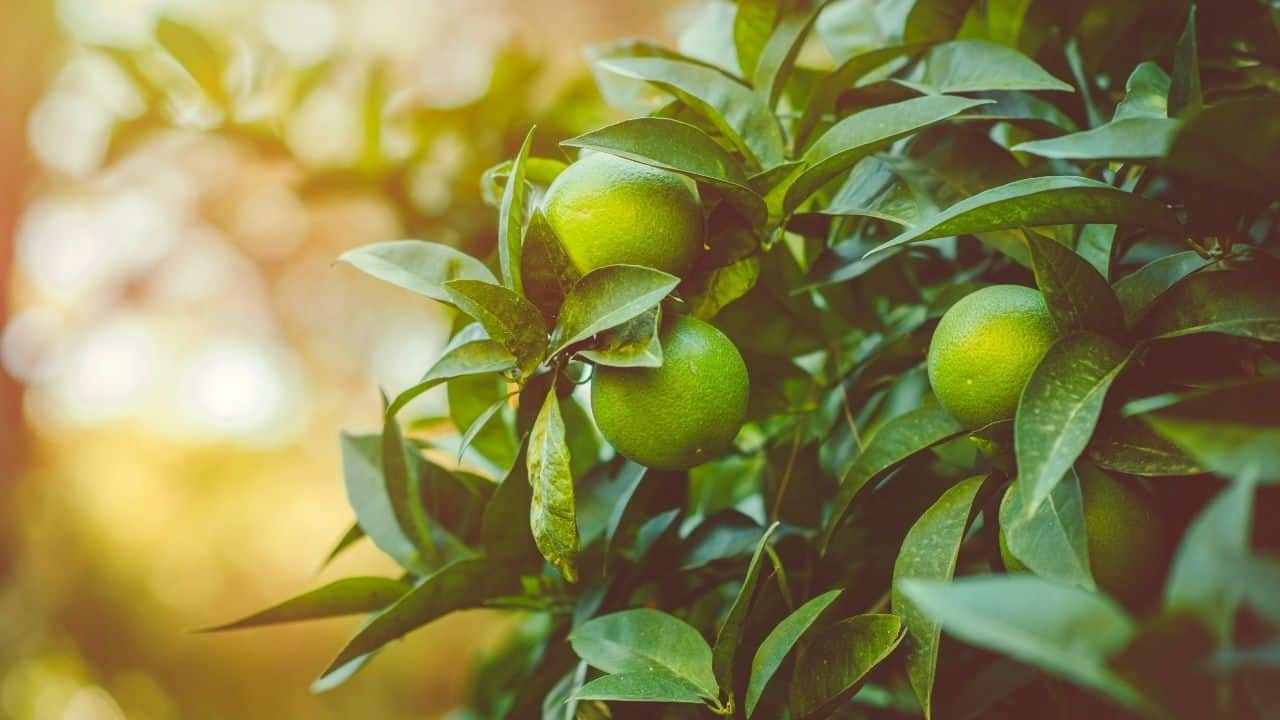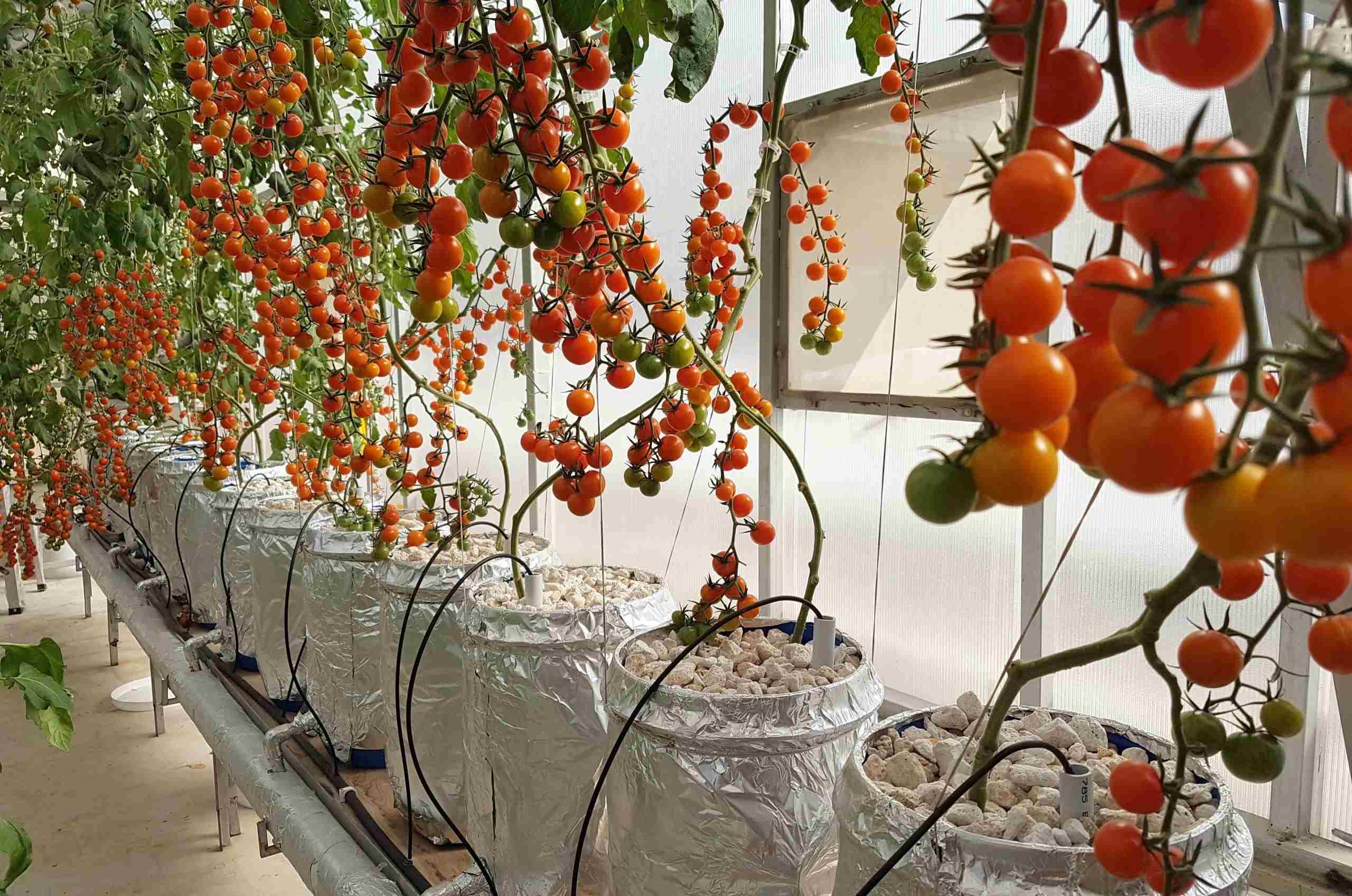Home>Gardening Techniques>Plant Care>How To Trim Tomato Seedlings
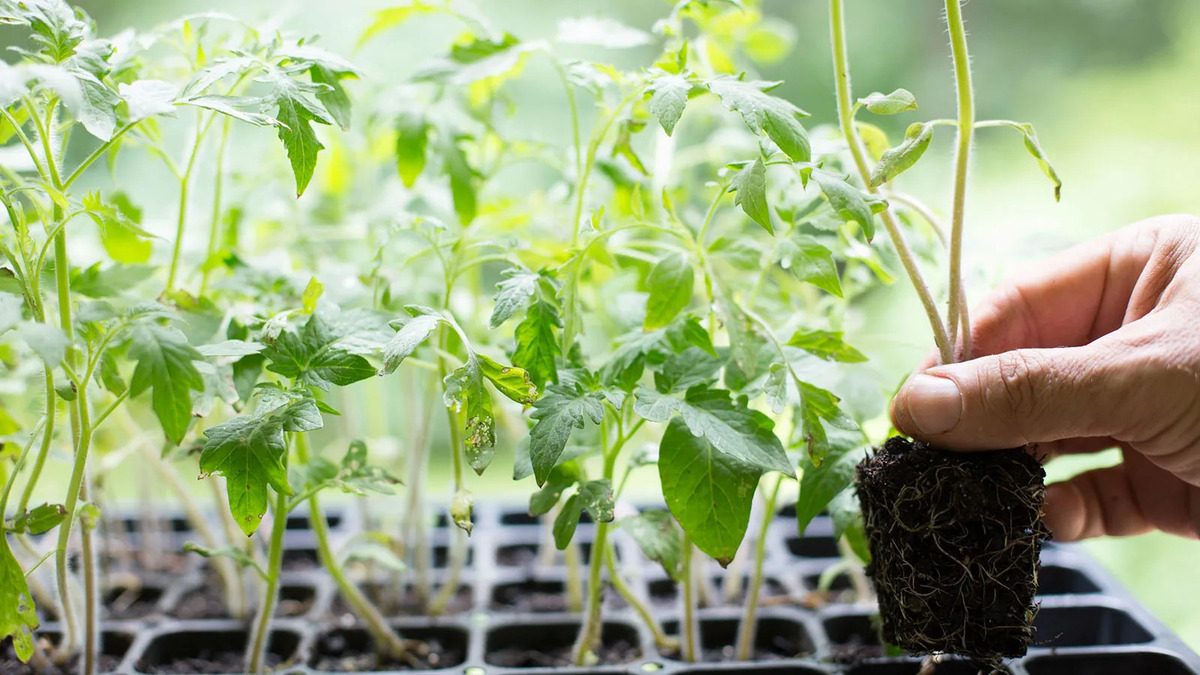

Plant Care
How To Trim Tomato Seedlings
Published: January 3, 2024
Learn the best plant care techniques for trimming tomato seedlings. Discover expert tips for promoting healthy growth and abundant harvests.
(Many of the links in this article redirect to a specific reviewed product. Your purchase of these products through affiliate links helps to generate commission for Chicagolandgardening.com, at no extra cost. Learn more)
Table of Contents
**
Introduction
**
Welcome to the exciting world of plant care, where the nurturing of delicate seedlings can lead to a bountiful harvest. As a plant enthusiast, you understand the importance of providing the best possible environment for your green companions. Trimming tomato seedlings is a crucial aspect of their care, as it promotes healthy growth and ensures a robust, productive plant.
Trimming, also known as pruning, involves the selective removal of certain parts of the plant to encourage desirable characteristics. When it comes to tomato seedlings, strategic trimming can enhance their overall health, shape, and fruit production. However, it's essential to approach this task with care and knowledge to avoid causing harm to the plants.
In this comprehensive guide, we will delve into the art of trimming tomato seedlings, providing you with the insights and techniques needed to execute this practice effectively. From choosing the right time to understanding the aftercare requirements, we will cover every aspect to equip you with the knowledge and confidence to trim your tomato seedlings successfully.
So, roll up your sleeves, grab your gardening tools, and let's embark on this rewarding journey of nurturing and shaping your tomato seedlings for a thriving and fruitful future.
**
Choosing the Right Time
**
Timing is crucial when it comes to trimming tomato seedlings. The goal is to strike a balance between allowing the seedlings to establish a strong foundation and ensuring that they are not overgrown or unruly. Understanding the optimal timing for trimming will set the stage for successful and healthy growth.
Before diving into the actual trimming process, it’s essential to observe the development of your tomato seedlings. Typically, the ideal time to begin trimming is when the seedlings have developed their first set of true leaves. These leaves are distinct from the initial cotyledon leaves and are a sign that the seedlings are ready for the next phase of growth.
As a general guideline, aim to start trimming when the seedlings are approximately 6-10 inches tall. At this stage, they have established a solid root system and are actively growing. Trimming at this point will encourage the development of sturdy stems and promote the growth of lateral branches, which will ultimately contribute to a more robust and productive plant.
It’s important to note that while early trimming can be beneficial, it’s equally crucial not to rush into the process. Avoid trimming the seedlings too early, as this can impede their initial growth and weaken their overall structure. Patience is key, and observing the seedlings’ growth patterns will guide you in determining the most opportune moment to commence trimming.
By choosing the right time to trim your tomato seedlings, you set the stage for a successful and harmonious pruning experience. This thoughtful approach ensures that the seedlings are ready to respond positively to the trimming process, laying the groundwork for healthy and vigorous growth in the subsequent stages of their development.
Preparing the Seedlings
Before engaging in the delicate art of trimming tomato seedlings, it’s essential to prepare the plants and create an optimal environment for the pruning process. Proper preparation sets the stage for a successful and stress-free experience for both the seedlings and the gardener.
First and foremost, ensure that the seedlings are well-hydrated before initiating any trimming activities. Adequate hydration not only supports the overall health of the plants but also makes the stems more pliable, reducing the likelihood of causing damage during the trimming process. Water the seedlings gently and allow them to absorb moisture for a few hours before proceeding with trimming.
Next, assess the overall health of the seedlings and remove any damaged or diseased leaves. This initial tidying up not only improves the aesthetic appeal of the plants but also prevents the spread of potential diseases during the trimming process. Carefully inspect the seedlings for any signs of stress, such as yellowing or wilting leaves, and address these issues before proceeding with trimming.
Creating a calm and focused atmosphere is also crucial when preparing for the trimming process. Minimize disturbances and ensure that you have a clear workspace to maneuver around the seedlings comfortably. Gather all the necessary tools, such as clean and sharp pruning shears, to facilitate a smooth and precise trimming experience.
Lastly, mentally prepare yourself for the task at hand. Approach the process with a mindset of care and attentiveness, acknowledging the significance of each snip and its impact on the future growth of the seedlings. Cultivating a sense of mindfulness during the preparation phase will set the tone for a mindful and purposeful trimming experience.
By taking the time to prepare the seedlings and the surrounding environment, you lay the groundwork for a successful and harmonious trimming session. This thoughtful approach not only ensures the well-being of the seedlings but also sets the stage for a rewarding and nurturing experience for both the plants and the gardener.
Trimming Techniques
When it comes to trimming tomato seedlings, employing the right techniques is essential to ensure the health and vitality of the plants. Pruning the seedlings with precision and care will promote robust growth and encourage the development of a strong and productive plant. Here are some effective techniques to consider when trimming your tomato seedlings:
1. Strategic Removal of Suckers: One of the primary objectives of trimming tomato seedlings is to manage the growth of suckers – the small shoots that emerge in the junctions between the main stem and branches. While some gardeners choose to remove all suckers, a strategic approach involves selectively removing those that are likely to impede airflow and light penetration or compete with the main stem for nutrients.
2. Pinching Off Excess Growth: Pinching off excess growth, especially at the top of the seedlings, encourages the development of a more compact and bushy plant. This technique redirects the plant's energy towards lateral growth, promoting the formation of strong branches and enhancing the overall structure of the plant.
3. Retaining Key Branches: While it's essential to manage excessive growth, it's equally important to identify and retain key branches that contribute to the plant's overall vigor and fruit production. Carefully assess the structure of the seedlings and retain branches that exhibit promising growth and positioning.
4. Pruning for Airflow and Light: Trimming the lower foliage and small, non-essential branches can improve airflow around the seedlings, reducing the risk of fungal diseases. Additionally, removing excess foliage at the lower levels of the plant enhances light penetration, supporting the healthy development of the entire plant.
5. Precision and Clean Cuts: Utilize sharp and clean pruning shears to make precise cuts, minimizing the risk of causing unnecessary damage to the seedlings. Make each cut at a 45-degree angle, just above a leaf node, to promote swift healing and minimize the risk of infection.
By employing these trimming techniques with care and precision, you can effectively shape and nurture your tomato seedlings, setting the stage for robust growth and a fruitful harvest. Approach the process thoughtfully, considering the unique characteristics of each seedling, and adapt the techniques based on their individual growth patterns and requirements.
Aftercare and Maintenance
Once the trimming process is complete, providing appropriate aftercare and ongoing maintenance is essential to support the recovery and continued growth of the tomato seedlings. The post-trimming phase is a critical period during which the plants require attentive care to ensure their successful adaptation to the pruning changes.
After trimming the seedlings, it’s important to monitor their progress closely. Keep a watchful eye on the plants for any signs of stress or shock resulting from the pruning. While the goal of trimming is to promote healthy growth, it’s natural for the seedlings to undergo a brief period of adjustment as they redirect their energy and resources to new growth areas.
Continue to provide consistent and appropriate watering to the seedlings, ensuring that the soil remains evenly moist but not waterlogged. Proper hydration is crucial for supporting the recovery process and facilitating the development of new growth following the trimming. However, avoid overwatering, as excessive moisture can lead to issues such as root rot and fungal diseases.
Consider supplementing the seedlings with a balanced, water-soluble fertilizer to provide essential nutrients that support their recovery and subsequent growth. A gentle feeding following trimming can help replenish any nutrients that may have been redirected during the pruning process, promoting healthy and vigorous regrowth.
As the seedlings begin to recover and exhibit new growth, continue to monitor their progress and adjust their care regimen as needed. Encourage the development of lateral branches by gently guiding their growth and providing support as necessary. Additionally, maintain a vigilant stance against potential pests and diseases, addressing any issues promptly to safeguard the health of the seedlings.
By providing attentive aftercare and ongoing maintenance, you can support the tomato seedlings in their post-trimming phase, setting the stage for strong and healthy growth. The nurturing and maintenance efforts following the trimming process are instrumental in ensuring that the seedlings recover smoothly and continue their journey towards becoming robust and productive tomato plants.
Conclusion
Embarking on the journey of trimming tomato seedlings is a rewarding and essential aspect of plant care that empowers you to shape and nurture your plants for optimal growth and productivity. By understanding the significance of choosing the right time to trim, preparing the seedlings, employing effective trimming techniques, and providing attentive aftercare and maintenance, you set the stage for a successful and harmonious pruning experience.
As you navigate the art of trimming tomato seedlings, remember that each snip and adjustment contributes to the overall well-being and future potential of the plants. Approach the process with mindfulness, acknowledging the unique characteristics of each seedling and adapting your techniques to suit their individual growth patterns and requirements.
Trimming tomato seedlings is a practice that embodies the delicate balance of nurturing and shaping, allowing you to play an active role in the growth and development of your plants. Through thoughtful observation, care, and precision, you can guide your tomato seedlings towards robust growth and a bountiful harvest.
As you continue your plant care journey, remember that the art of trimming extends beyond the physical act of pruning. It encompasses a deep understanding of the plants’ needs, a sense of attentiveness to their growth patterns, and a commitment to providing the best possible environment for their flourishing.
By embracing the art of trimming tomato seedlings with care and knowledge, you not only foster the health and productivity of your plants but also embark on a fulfilling and enriching gardening experience. The journey of nurturing and shaping your tomato seedlings is a testament to the profound connection between gardener and plant, where each deliberate action contributes to the unfolding story of growth and vitality.
So, as you embark on your next trimming endeavor, may you approach the process with a sense of reverence and joy, knowing that each carefully considered snip is a gesture of nurturing and encouragement towards a thriving and fruitful future for your tomato plants.


